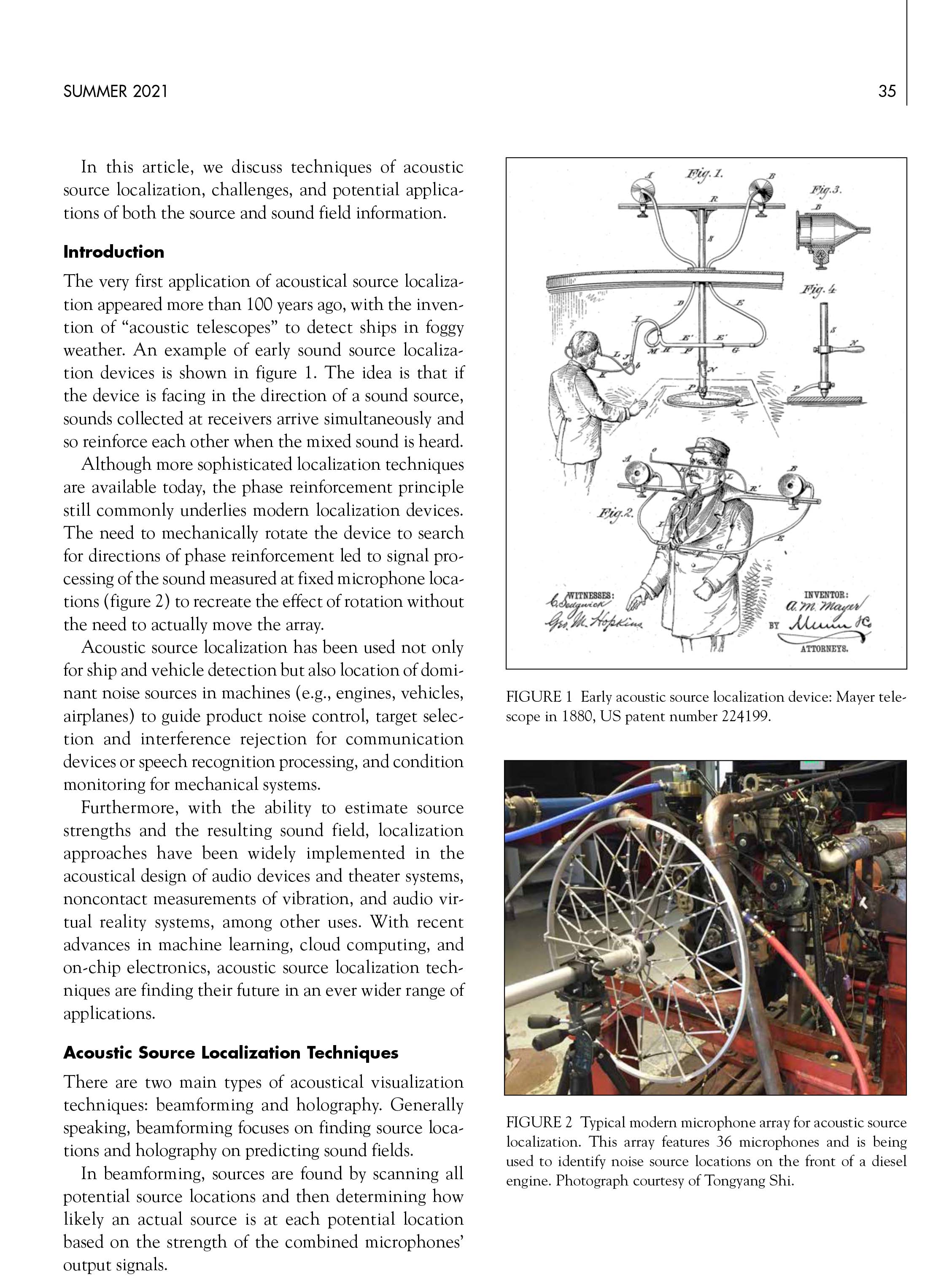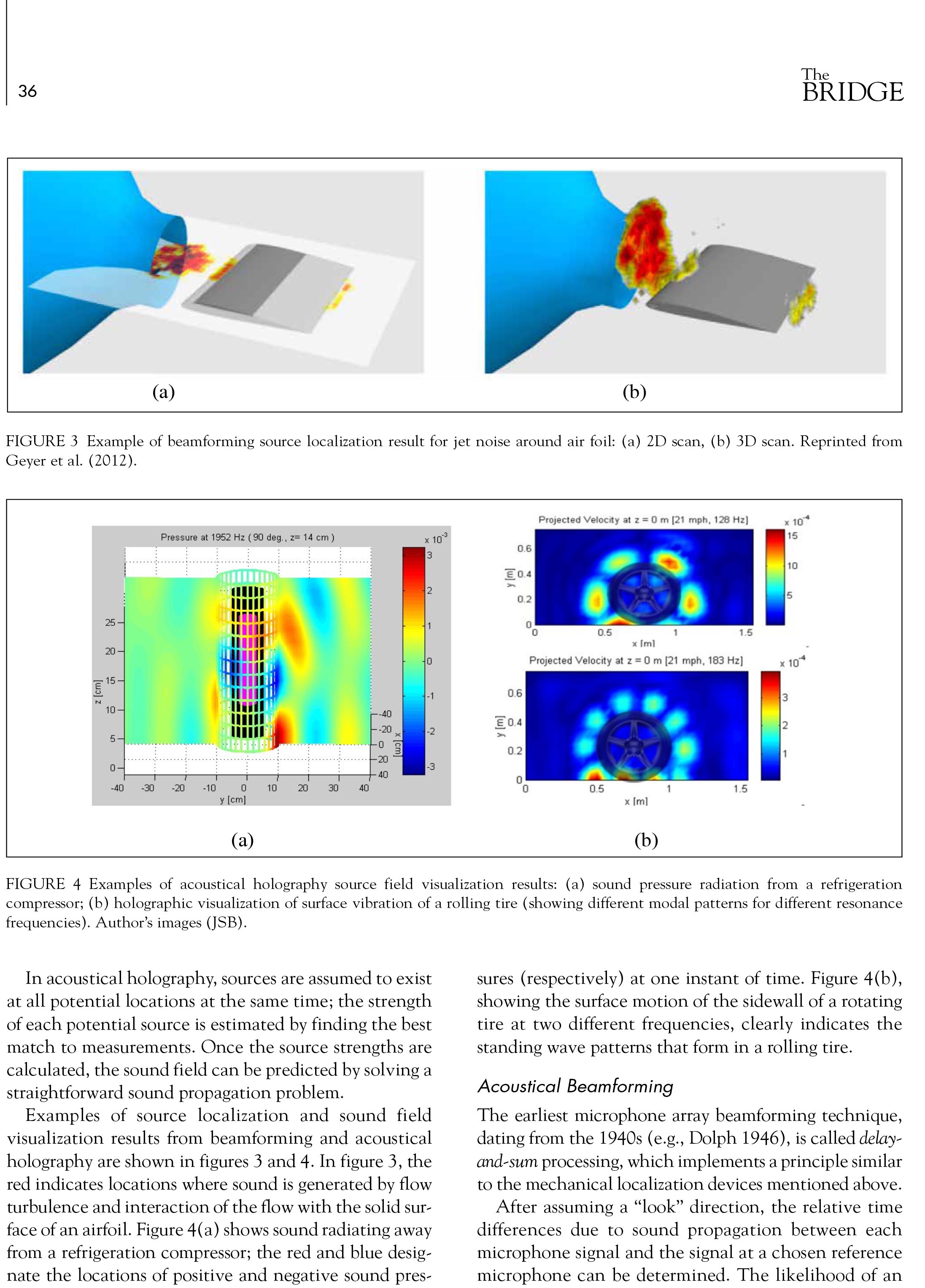AncSonic's Expert Team Publishes Latest Acoustic Report in an International Authority Journal
 348
348
Recently, AncSonic's acoustic expert team published a professional acoustic industry report titled “Acoustic Source Localization Techniques and Their Applications” in the Proceedings of the National Academy of Engineering, The BRIDGE.

The National Academy of Engineering, established in December 1964, is the highest academic institution in the field of engineering and technology in the United States, as well as one of the most influential engineering academies in the world. Its journal, The BRIDGE, is a leading review journal that compiles the latest research results from top engineers, providing guidance for industry development.
The industry report comprehensively analyzes the principles, core aspects, challenges, and potential applications of acoustic source localization techniques. It points out that there are two main types of acoustic visualization techniques: beamforming and acoustic holography. Generally, beamforming focuses on locating sources, while acoustic holography aims to predict sound fields.
In beamforming, potential source locations are scanned, and the likelihood of the actual source being at each potential location is determined based on the intensity of the combined microphone output signals.
In acoustic holography, it is assumed that the sound source exists simultaneously at all potential locations. The intensity of each potential source is estimated by finding the best match with measured values. Once the sound source intensities are calculated, the sound field can be predicted by solving a simple sound propagation problem.
These methods for achieving source localization are used not only for detecting ships and vehicles but also for locating major noise sources in machines such as engines, vehicles, and aircraft. This helps guide noise control, target selection, and interference suppression for communication devices or speech recognition processing, as well as for monitoring the status of mechanical systems.
With the ability to estimate sound source intensity and generate sound fields, localization methods have been widely applied in the acoustic design of audio devices and theater systems, non-contact vibration measurement, and audio virtual reality systems. As machine learning, cloud computing, and electronic technology develop, the applications of source localization technology will become increasingly widespread.
As a reference, this industry report offers deep insights into source localization, presenting innovative ideas and clear viewpoints. Based on the existing framework of acoustic theory, it also proposes forward-looking perspectives, which are helpful for advancing the depth and expansion of acoustic holography technology. This provides significant guidance for AncSonic's research and application of acoustic technology.
The following content is excerpted from the industry report:


News
Algorithm-Driven Innovation: Opening a New Frontier in Spatial Audio
2025.09.25
AncSonic has taken a different approach—reconstructing the soundfield through algorithms instead of hardware stacking, unlocking new possibilities for spatial audio in cars.
40dB Acoustic Zoning – Redefining Personalized In-Car Audio
2025.07.24
AncSonic introduces a next-generation zonal acoustic solution, enabling up to 40dB sound pressure attenuation between adjacent seats.
AncSonic x Cambridge Audio | Co-Creating the Melomania A100 — A New Benchmark in British Acoustics
2025.07.01
The A100 represents another bold step in pushing the boundaries of wireless Hi-Fi and reflects the deep cross-cultural integration between the two companies in audio innovation.
AncSonic × SoundPEATS | Flagship Hi-Fi Acoustics Evolved
2025.06.17
The launch of the H3 not only showcases AncSonic’s deep technical foundation in intelligent acoustics but also highlights its strong synergy with earphone brands in co-developing products and integrating advanced technologies.




